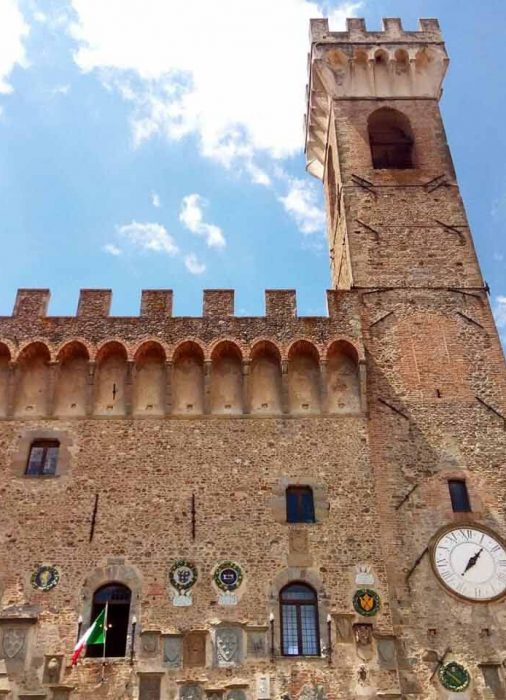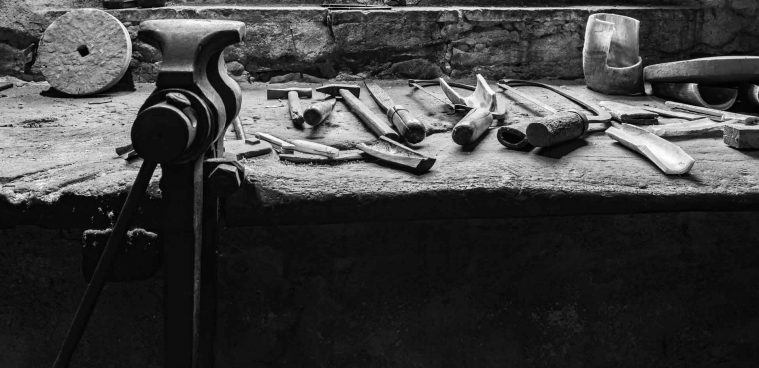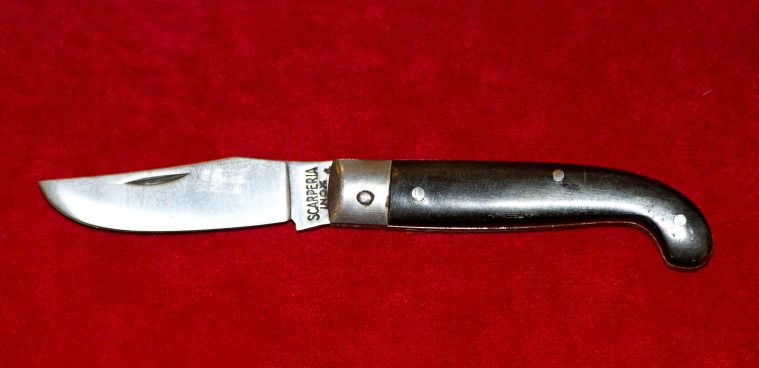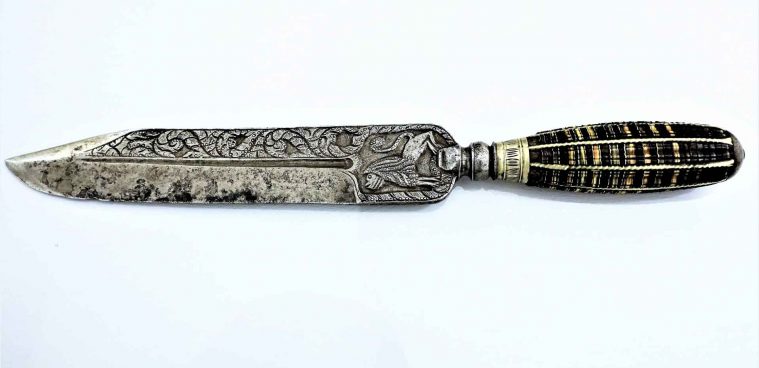Introduction
Scarperia can be defined as a country of knives, and the Museum of Cutting Tools (Museo dei Ferri Taglienti), inaugurated in 1999, documents the centuries-old activity of its knife makers.
There is no precise information on the origin of this activity: there is talk of an initial production of weapons necessary for the defense of the castle, an idea that fits in well with the nature of a fortified garrison that Scarperia had since its foundation. Another possibility is that the production of irons was born to respond to the need for agricultural work in the nearby countryside.
Already in the fifteenth century, Scarperia had gained prestige in the field of the production of knives and other cutting irons, thanks to its position along an important communication route towards the north.
In a new part of the Palazzo dei Vicari there is the Museum of Cutting Tools (Museo dei Ferri Taglienti), inaugurated in 1999, where the centuries-old activity of the Scarperia makers of cutlery is documented.
The museum is managed by the association called “Pro Loco Scarperia” which for years has been dealing, through an agreement with the municipal administration of Scarperia and San piero, of the entire museum complex consisting of the oldest section of the Palazzo dei Vicari with partially furnished and frescoed rooms, and the museum of cutting irons, located in the north wing of the building itself. Just outside the palace is also part of the museum itinerary the ancient knife maker’s workshop, which can be visited with a guide by reservation.
Introduction
Scarperia can be defined as a country of knives, and the Museum of Cutting Tools (Museo dei Ferri Taglienti), inaugurated in 1999, documents the centuries-old activity of its knife makers.
There is no precise information on the origin of this activity: there is talk of an initial production of weapons necessary for the defense of the castle, an idea that fits in well with the nature of a fortified garrison that Scarperia had since its foundation. Another possibility is that the production of irons was born to respond to the need for agricultural work in the nearby countryside.
Already in the fifteenth century, Scarperia had gained prestige in the field of the production of knives and other cutting irons, thanks to its position along an important communication route towards the north.
In a new part of the Palazzo dei Vicari there is the Museum of Cutting Tools (Museo dei Ferri Taglienti), inaugurated in 1999, where the centuries-old activity of the Scarperia makers of cutlery is documented.
The museum is managed by the association called “Pro Loco Scarperia” which for years has been dealing, through an agreement with the municipal administration of Scarperia and San piero, of the entire museum complex consisting of the oldest section of the Palazzo dei Vicari with partially furnished and frescoed rooms, and the museum of cutting irons, located in the north wing of the building itself. Just outside the palace is also part of the museum itinerary the ancient knife maker’s workshop, which can be visited with a guide by reservation.
MUSEUM OF
CUTTING TOOLS
The set-up is divided into 5 thematic sections: the first, multimedia in nature, presents videos related to the artisanship of the knife; the second is dedicated to Italian cutlery and its production centers from the end of the 19th century to the present day, the third instead to the history of the knife makers of Scarperia. The fourth section, entitled “Female Blades“, presents the other category of cutting blades: scissors for embroidery and tailoring. Finally, the fifth section is dedicated to social life, and is periodically modified with reconstructions that relate to moments of life in the area.
The museum offers an active visit through videos, educational panels, touch screen monitors, a video-audio guide and a work bench where the visitor can try his hand at assembling the knife.
The museum’s activities are managed by the Research and Documentation Center on Cutting Tools (centro di ricerca e documentazione sull’artigianato dei ferri taglienti), a scientific-technical group that has been created by scholars and experts in the sector. The museum is part of the “Diffused Museum” (Museo Diffuso), the museum system of the Mugello and the Florentine mountains.

THE RESEARCH CENTER
The research and documentation center on cutting tools (Centro Ricerca e Documentazione sull’Artigianato dei Ferri Taglienti) is a scientific-technical group created in 1987 by the will of the municipal administration. Specialists and experts in the sector are members, with particular reference to research on the material culture of cutting tools, the museum exhibition, the history and the anthropological-cultural study of this object; technical staff and representatives of the cutlery of Scarperia participate
THE DIFFUSED
MUSEUM
The Ferri Taglienti museum is part of the “Diffused Museum“, a museum system that collects the museums of Mugello and the Florentine Mountain. It is divided into systems, each of which includes museum points, educational workshops, itineraries. There are four systems:
- the Naturalistic System is coordinated by the Museum of the historical landscape of the Apennines which is located in the Abbey of Moscheta (Firenzuola).
- The System of Archaeological Heritage can be used through itineraries that touch the most important archaeological sites in the area and two specialized laboratory-museums in the prehistoric, ancient and medieval sector: the Archaeological Museum of Palazzuolo sul Senio, the Archaeological Documentation Center of Sant’Agata (Scarperia), the District Archaeological Museum and the excavations of Frascole in Dicomano.
- The Demo-Ethno-Anthropological System collects the Museum of Cutting Tools of Scarperia, the Museum of Peasant Civilization of Casa d’Erci in Grezzano (Borgo San Lorenzo), the Museum Serena stone in Firenzuola, the Museum of the Mountain People in Palazzuolo sul Senio and the Museum of Wine in Rufina.
- The System of Historic Artistic Heritage includes the Museum of the Chini Manufacture in Borgo San Lorenzo, the Giotto House and the Museum of Sacred Art and Popular Religion in Vicchio, the Collection of Sacred Art of S. Agata (Scarperia).
For further information visit www.mugellotoscana.it
It is possible to visit all the museums of the system at a reduced price by purchasing a full ticket at the first museum. Ask at the ticket office.
MUSEUM OF CUTTING TOOLS REGIONAL ACCREDITATION
The Tuscany Region – Museums and Ecomuseums Sector – with executive decree n°. 4856 of 30/10/2014 concludes the process of recognition of museums of regional importance for the year 2014. The Museo dei Ferri Taglienti of Scarperia has participated for the first time in this procedure obtaining this important recognition, which is still maintained .
This recognition drives the museum to a path of continuous improvement and renewal, so that the cultural and social growth of the community of Scarperia passes through the knowledge of its origins, history and beauty, then spreading it to the visitor.
The recognition obtained commits the Museo dei Ferri Taglienti with even more responsibility and passion in the care of the premises, furnishings, equipment, increasing participation in events and reviews. The Museum organizes annually the prestigious Exhibition of Cutting Tools or popular events such as the Market Exhibition of the Custom Knife, but also by increasing the educational offer and proposing more and more activities aimed at the increasingly wider use of the contents, towards an ever wider public.








